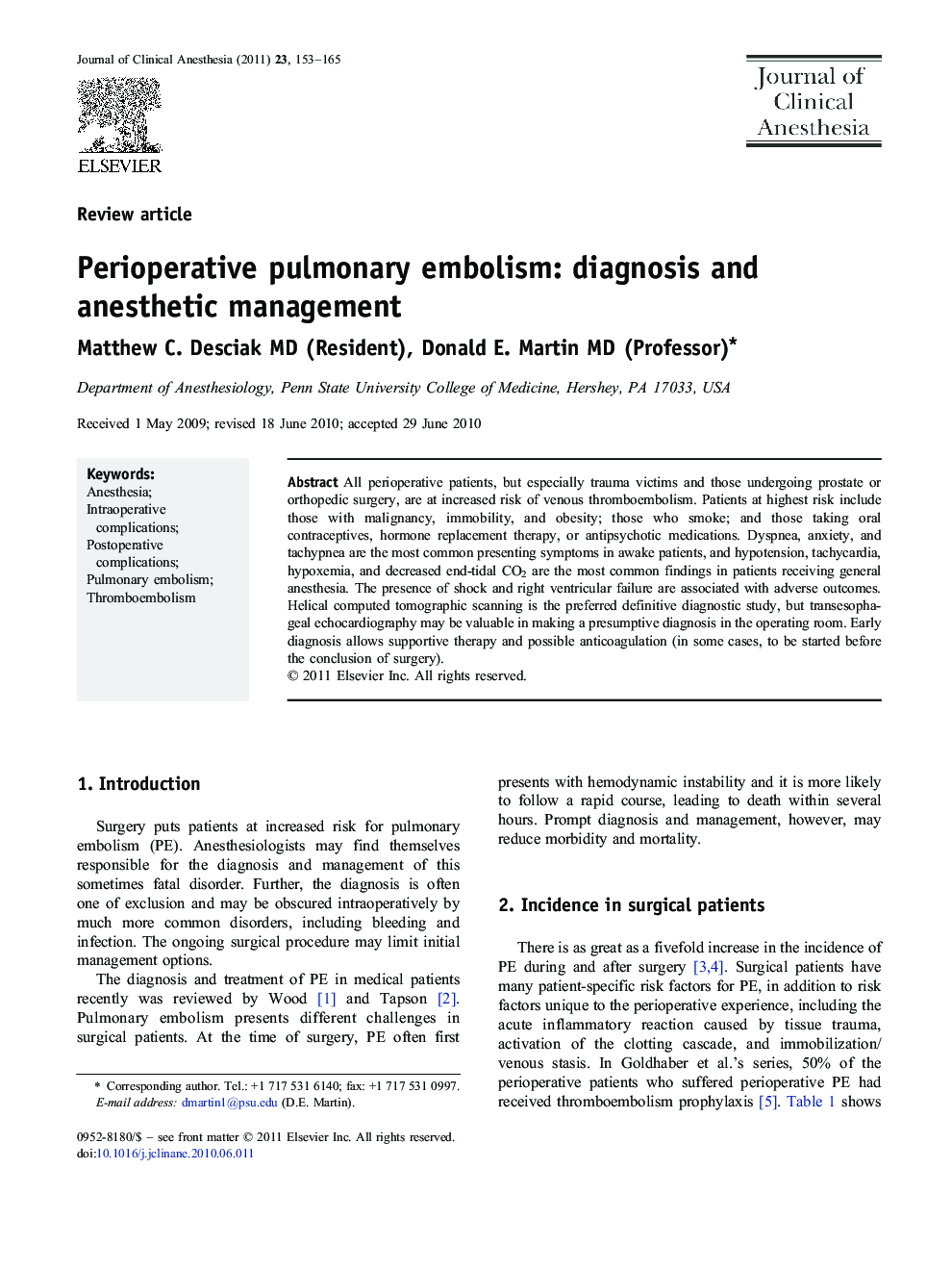| کد مقاله | کد نشریه | سال انتشار | مقاله انگلیسی | نسخه تمام متن |
|---|---|---|---|---|
| 2763482 | 1150754 | 2011 | 13 صفحه PDF | دانلود رایگان |

All perioperative patients, but especially trauma victims and those undergoing prostate or orthopedic surgery, are at increased risk of venous thromboembolism. Patients at highest risk include those with malignancy, immobility, and obesity; those who smoke; and those taking oral contraceptives, hormone replacement therapy, or antipsychotic medications. Dyspnea, anxiety, and tachypnea are the most common presenting symptoms in awake patients, and hypotension, tachycardia, hypoxemia, and decreased end-tidal CO2 are the most common findings in patients receiving general anesthesia. The presence of shock and right ventricular failure are associated with adverse outcomes. Helical computed tomographic scanning is the preferred definitive diagnostic study, but transesophageal echocardiography may be valuable in making a presumptive diagnosis in the operating room. Early diagnosis allows supportive therapy and possible anticoagulation (in some cases, to be started before the conclusion of surgery).
Journal: Journal of Clinical Anesthesia - Volume 23, Issue 2, March 2011, Pages 153–165